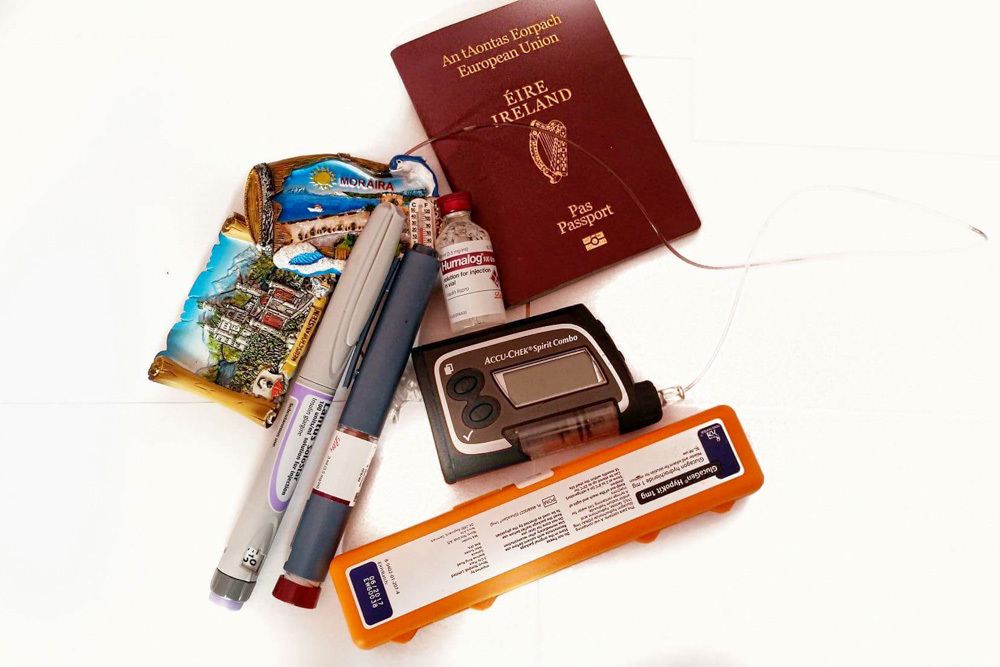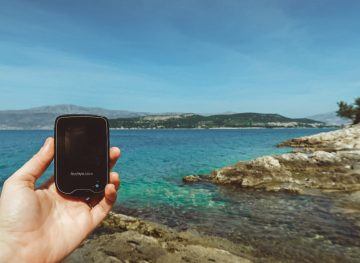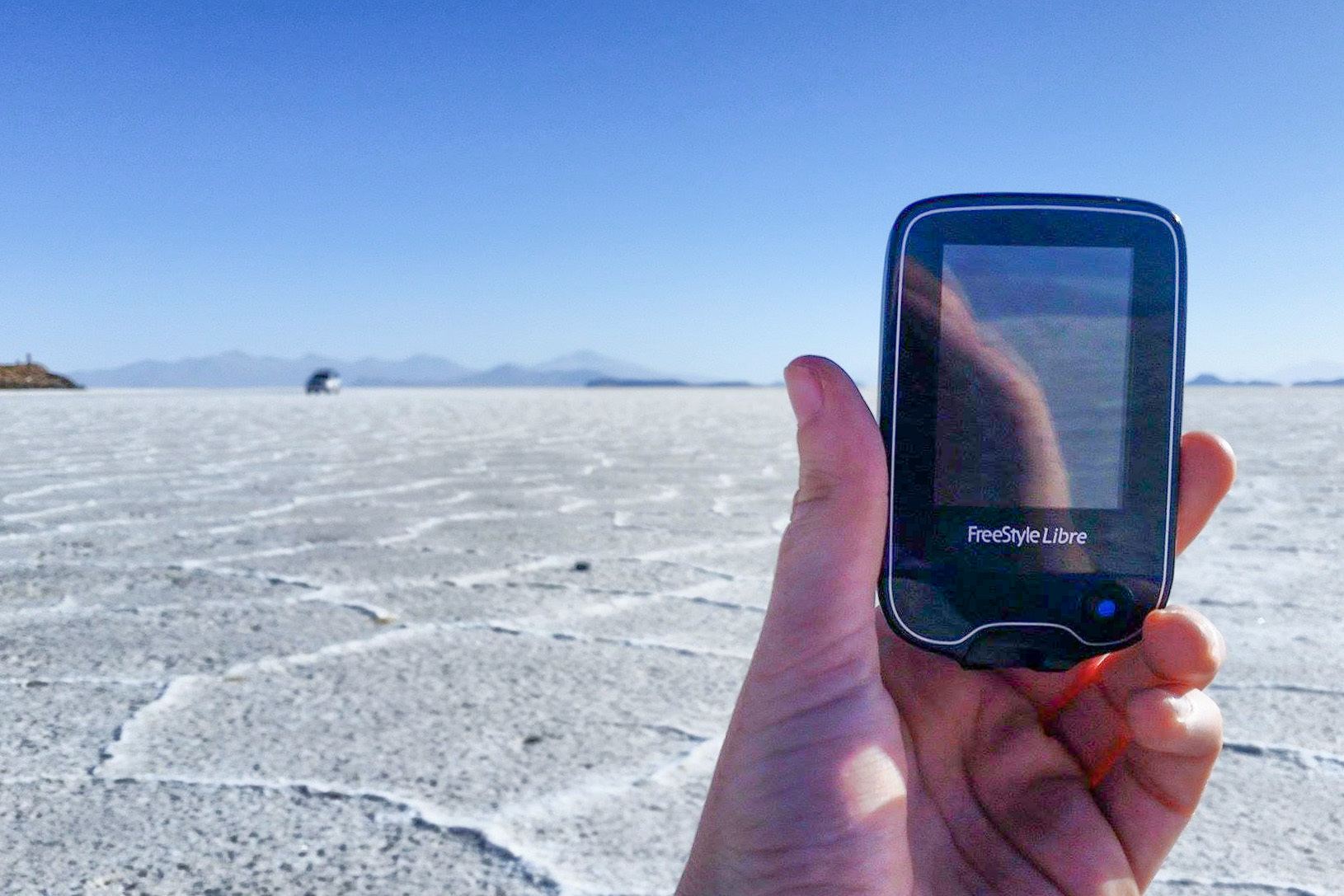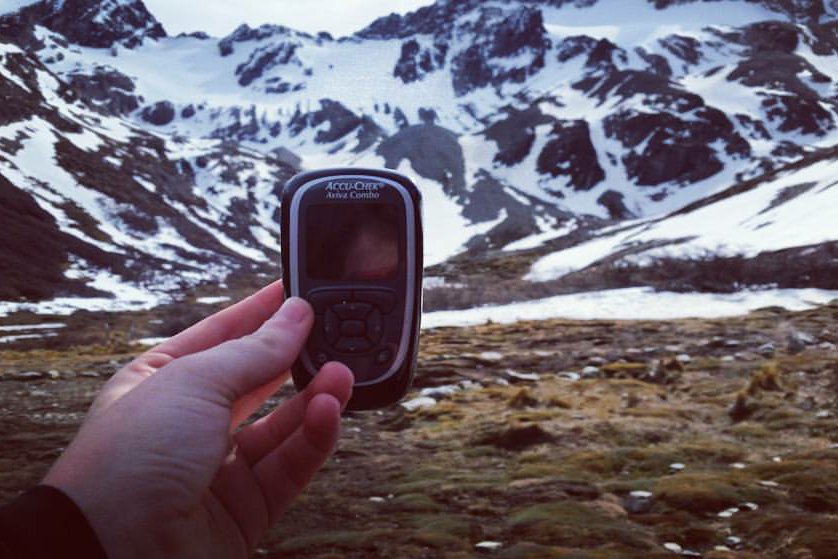This post was written by diabetes travel expert, Cazzy Magennis of Dream Big Travel Far!
Traveling with diabetes is a challenge, but a wonderful adventure. Of course traveling means we often find ourselves crossing various time zones, which can be hard for type 1 diabetic travelers.
I’ve put together this guide on dealing with crossing time zones with type 1 diabetes!
Crossing Time Zones With an Insulin Pump
I travel full-time with an insulin pump, so I have lots of experience in this department!
If you have an insulin pump, crossing time zones is going to feel like a breeze. Simply leave your settings the same and change the clock on your insulin pump to the new time zone when you land.
If you are crossing various time zones on your flight, it makes no sense to keep switching the time, so just wait until you have arrived at your final destination to switch the time. Monitor frequently and correct any random highs.
You might find that because you are sitting on a flight for a long period of time, your blood sugar may run higher, and you may need to use a temporary basal rate of an increased 10-20%.
The use of an insulin pump makes life a lot easier for diabetic travelers especially if you are crossing multiple time zones. However, it’s important to monitor your blood sugars more closely for the next couple of days.
You may find that you are running higher or lower, and if this is the case, then perform some carb free basal checks to adjust your basal rate. You may find it useful to have the FreeStyle Libre, or a CGM with you when you’re crossing time zones to detect patterns quicker.
Crossing Time Zones With Insulin Injections
If you are on insulin injections, then crossing time zones can feel a little daunting, especially when it comes to long-lasting insulin (that’s your Levemir or Lantus). Thankfully, there are some guidelines that have been put in place to help.
If you are on multiple daily injections (i.e you inject when you eat) then this information will be helpful to you. Remember, that I am not a doctor, so if you do intend on making changes to your insulin regime, please seek advice from a medical professional.
The general rule is that when traveling east to west, the day is lengthened and you may be advised to have an extra meal and to cover it with extra insulin. When traveling west to east, the day is shortened and the amount of carbohydrate and insulin may need to be reduced.
Remember, that if your time zone change is less than 4 hours, then you won’t really need to make big changes.
Most people today are on multiple fast-acting injections alongside one long-lasting injection a day. This is a far cry from the past where people were on specific doses at certain times of the day.
Thanks to this new flexibility, crossing time zones doesn’t need to be overly complicated.
2 Injections a Day: If you are on 2 fast acting injections a day, then one long-lasting injection a day (traveling from East to West) you may need a small dose of insulin with food between your two main injections. This is something to discuss with your doctor.
A shortened day (traveling West to East) may mean that you need to reduce your pre-flight insulin. These are some general guidelines:
- Before you leave your original country, take your usual scheduled dose amount at the normal time.
- Maintain the same timezone as your departure country once you have taken off.
- At your next scheduled dosage time take a reduced dose of insulin in line with this formula:
Reduced travel dose = Normal dose x (0.9 – [#of time zones you cross ÷ 24])
With fast-acting insulin it’s a case of taking insulin when you eat to cover carbs, regardless of the time zone. With long-lasting, you can use the various formulas and advice above to achieve a balance.
When I traveled solely with pens, I would take my long-lasting insulin at the same time I would at home, then adjust. So, if my flight was at 7 pm, and I took my long-lasting insulin at 8 pm, then I would take it on the plane. Then, when I got to my new time zone and the full 24 hour period was up (that’s how long your background insulin lasts), I would take my next dose at 8 pm in my new destination.
If there was a period of a couple of hours between the two doses, I would simply give myself fast-acting insulin (Humalog, Novolog, etc.) to rectify any high blood sugars that would occur. Then my body would be set in the new time zone!
Dealing with Jet Lag
One unfortunate byproduct of crossing time zones is jet lag, which can impact our diabetes too! So, I’ve put together some tips that I’ve used over the years to help.
Sleep On The Plane (or don’t!):
I find that the best way to deal with jet lag is to simply mimic the time zone of the country you are visiting. So, if you get on the plane, and it’s sleeping time in the country you are going to, then force yourself to sleep on the plane.
It works the same for if your destination country is awake and you are on an overnight flight….force yourself to stay awake (lots of caffeine). I do this all the time, and whilst it is hard at times to force my body to do something it doesn’t want too, I never get jetlagged.
Only ever sleep when your destination country is sleeping too!
Keep Everything Else the Same:
It’s not just jetlag that will affect your blood control, you will be contending with new temperatures, foods, and altitudes. So, try your best to control all the other variables whilst adjusting to the time zone.
If that means foregoing exotic meals for a day or so, then do so! Extreme tiredness (caused by jet lag) can make our blood sugars run higher because our bodies are stressed, and high blood sugars are not our friend.
I hope that this little guide has given you some reassurance to crossing through time zones with diabetes. If you don’t get it right, don’t worry!
Your blood sugars running higher for even 24 hours isn’t going to cause you dramatic complications, so just deal with it when you can. Don’t over-stress yourself.
If you’d like more tips, tricks, advice and $200 worth of discounts with various diabetic tools to help you travel easier, then you can check out our brand new eBook and course! My lovely Blonde Abroad readers get 30% off with the code BLONDE30.















This is such a good post! I have a few friends that have diabetes, and I know what a struggle it can be sometimes. Having tips for travel I can share is great! Thanks!
Great blog thanks for sharing
You’re very welcome! 🙂